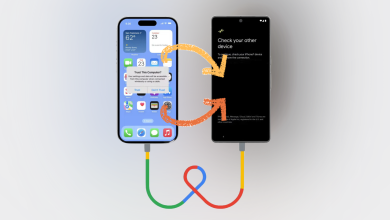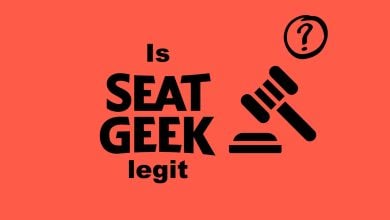The 7 Best Thingiverse Alternatives to Use in 2024 [Free]
- While Thingiverse remains popular, concerns over security, slow performance, and lack of commercial restrictions have led users to seek alternative platforms with better safeguards and user experiences.
- Platforms like Printables and My Mini Factory prioritize quality control, offer active community engagement, and provide advanced search tools, enhancing users' overall 3D printing experience.
- From platforms like Cults and CGTrader offering extensive model categories to Thangs providing advanced search capabilities and collaboration tools, there's a diverse range of alternatives to Thingiverse tailored to different user requirements and preferences.
Thingiverse was launched in 2008 by Makerbot Industries and has become the biggest collection of free 3D model files in the world, with over 1.4 million options available. Anyone can download these designs, which are uploaded by specialists and professional designers excited to share their creations.
Sometimes, Thingiverse might not have precisely what you need. This guide will introduce alternatives to Thingiverse, where you can find various high-quality 3D printing files. We’ll explain what Thingiverse is, why you might need alternatives, the best options available, and how to use search engines to find STL files.
Table of Contents
What is Thingiverse?

Thingiverse is a website where people can share files for physical objects that can be made using 3D printers. Initially, finding or sharing 3D printing files on the internet was hard.
The site grew slowly initially, and it took four years before they could boast about having nearly 25,000 files. However, growth picked up speed, and by 2015, over a million files were available on Thingiverse.
Over time, Thingiverse transformed from a niche site into the biggest 3D model website in the world. Currently, the website has around 2.5 million files, which have been downloaded hundreds of millions of times.
READ MORE: The 5 Best 3D Printers for Beginners in 2024 [All Budgets] ➜
Why do you need Thingiverse alternatives?
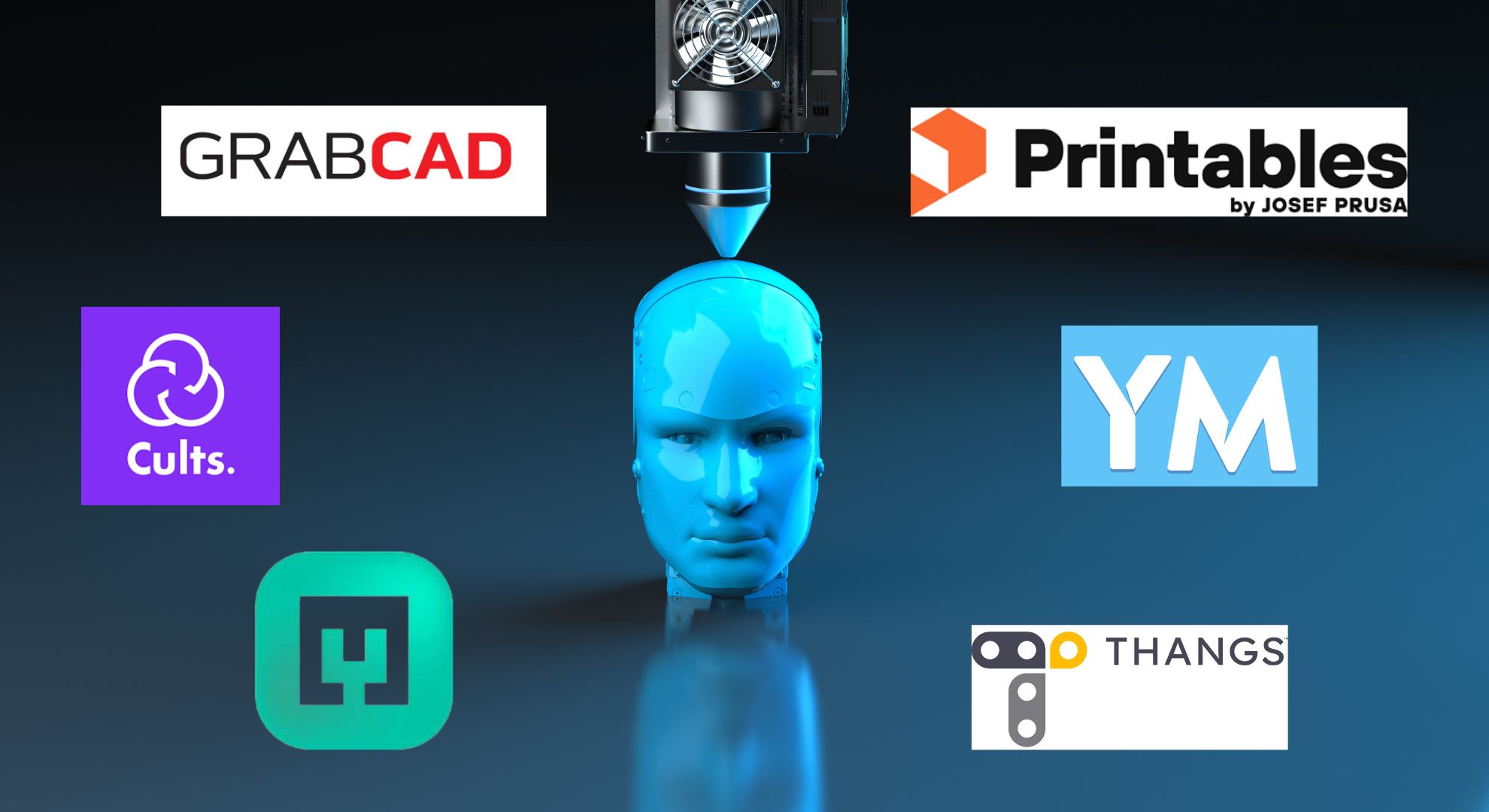
Thingiverse might not offer everything everyone is looking for. You might need to explore some other options offering similar or better designs. Here are the reasons why you might consider using other websites to download 3D files:
- Security concerns: Thingiverse has had several security problems, including data breaches, which have worried people about how safe their information is on the platform. The site no longer allows downloads of zip files, which further affects its safety and reliability.
- File removals: Due to security concerns, many designers are removing their files from Thingiverse. Users often find files unavailable, which can be very annoying.
- Slow performance: Thingiverse often loads very slowly because it has many ads. Even if you use ad blockers, the site prioritizes ads over user content, making navigating hard.
- Lack of commercial restrictions: Although Thingiverse offers a huge selection of free files, it does not have many rules about using these files for business purposes, which can be a problem for people looking to use these designs commercially.
- Price: Thingiverse is free, which is excellent for people who don’t want to spend much money. The free models might not always be the best quality for printing; sometimes, the models you pay for can look better and work better.
Considering these issues, looking at other websites that offer similar 3D files but without these problems might be a good option.
READ MORE: The 5 Best LookMovie Alternatives for Free Shows & Movies ➜
The Best Thingiverse Alternatives
Here are the 7 Thingiverse alternatives you should consider to provide reliable and secure access to high-quality designs, ensuring you always have plenty of options:
1. Printables
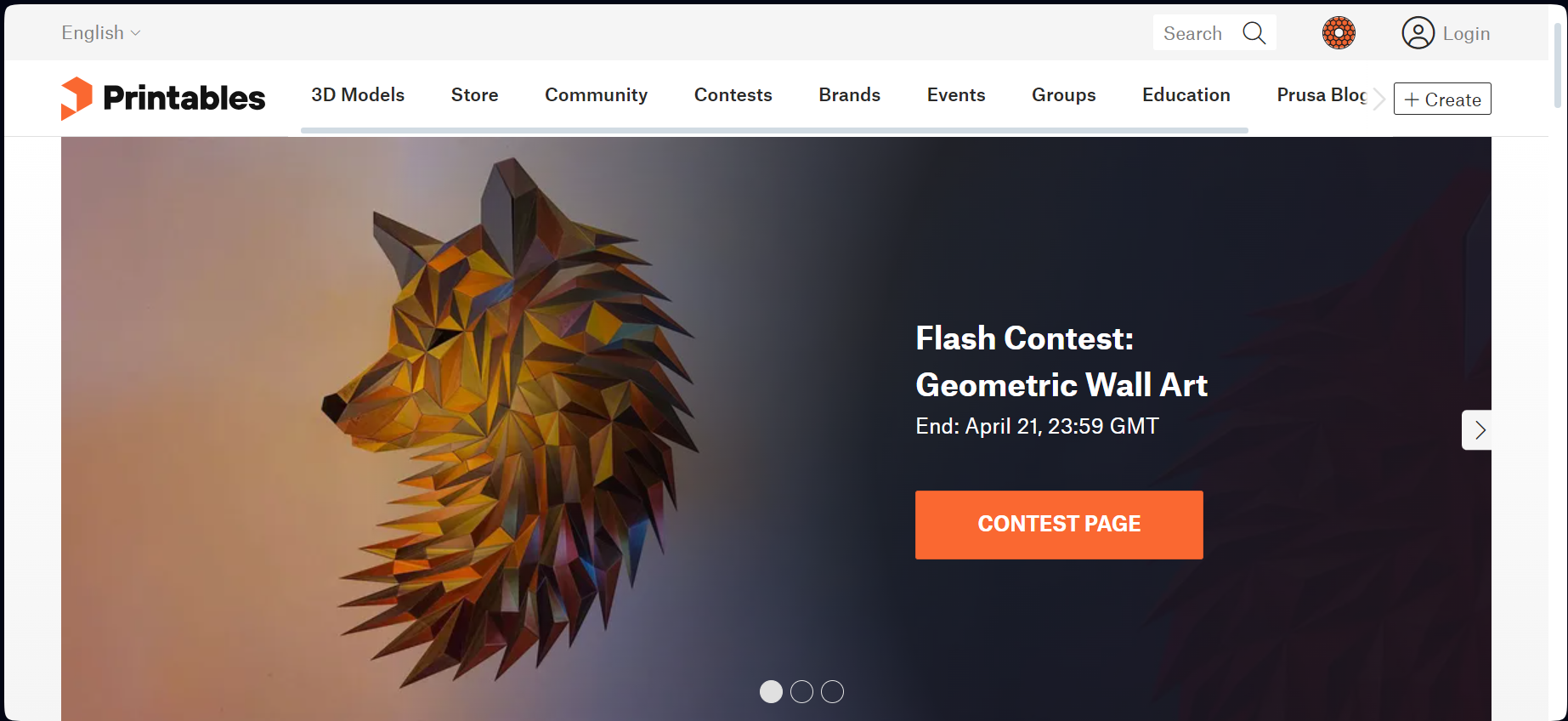
Printables is an excellent alternative to Thingiverse. It was made by Prusa Research, famous for its reliable and high-quality printers. Like Thingiverse, Printables is a site where you can find free models to download. You don’t need a Prusa printer to use it.
The website looks more modern and is easier to use than Thingiverse. It’s good at organizing and filtering, so you can quickly find your desired model.
You can look up models based on the type of printer you have, the material you want to use, how big the nozzle is, how long it will take to print, and even how much filament you’ll need. It also has unique search options for models made with resin 3D printers.
Printables also holds contests where users can win awesome prizes. They’ve started something new called “Printables Clubs,” which works like Patreon. Members enjoy special access to exclusive models, participate in creator polls, and get additional benefits. Creators with at least 50 active supporters see their earnings more than double.
With many new features and more models added, Printables is growing fast and becoming a lively place to explore 3D designs. Being part of this platform feels like an exciting journey.
↪ Pros
- Free to use for everyone
- Advanced search and filtering options
- Offers a subscription service for extra perks
↪ Cons
- Specific features aimed at Prusa printer owners
- The subscription model might not suit everyone
2. Cults
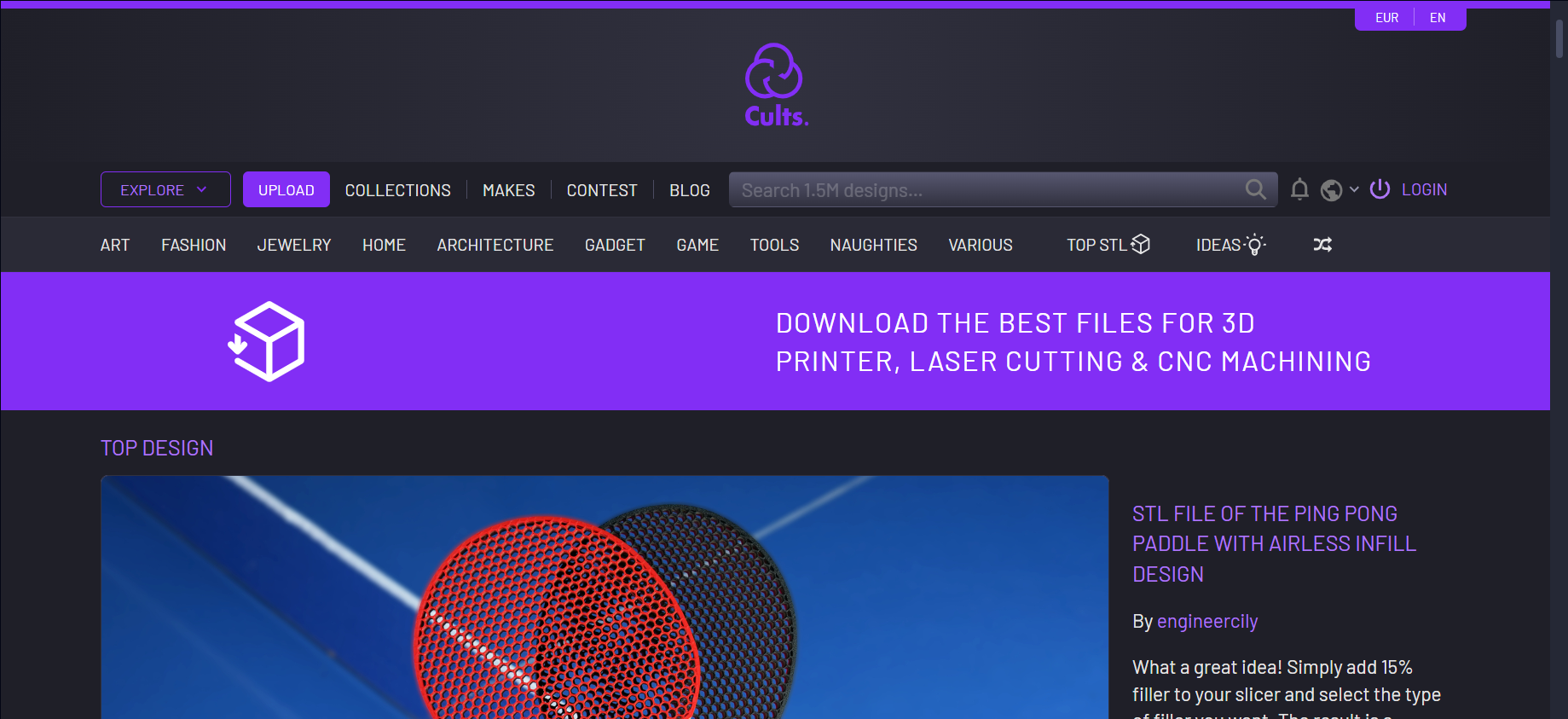
Cults is a French website that started in 2014 and was the first independent site for sharing 3D files. Its name interestingly spells “St. Luc” backward, who is the patron saint of artists and sculptors. It has quickly become the second-largest site for 3D printing files after Thingiverse.
Cults allows designers to share their designs for free or sell them. You can easily find the free files using a simple filter. The site has over six million users and offers many printable files. It also provides excellent tools for sorting these files into categories like art, architecture, gadgets, and more unique ones.
Cults also organizes contests, features a set of STL files every month, and has a function to discover random new designs. Their competition with Thingiverse is quite open; for example, they have a feature that lets you automatically move all your 3D models from Thingiverse to Cults.
↪ Pros
- Minimal fees charged.
- Extensive user community.
- User-friendly interface and tools.
- High visitor numbers from the 3D printing community.
↪ Cons
- Poor customer service.
- Strict content guidelines
READ MORE: SKP File Extension – What is it & How to Open it? ➜
3. My Mini Factory

My Mini Factory is one of the top websites to find 3D models online. Similar to Thingiverse, it hosts many user-uploaded designs sorted into various categories, with most being free.
The site checks every single 3D model uploaded for quality, making it a reliable option, especially for beginners. This sets My Mini Factory above Thingiverse, where some models might need to be better made or unprintable because they come from video games.
Designers can speed up the approval process by showing photos of printed models. If they don’t provide photos, the My Mini Factory team will print the model themselves to check its quality.
Although My Mini Factory often has fewer designs than Thingiverse due to its strict checking process, this doesn’t mean it has less exciting models. In fact, many models on Thingiverse are just altered versions from My Mini Factory’s own customization app.
My Mini Factory also runs contests that draw many designers who upload their work, hoping to win prizes. Recently, they added a new feature for customizing files, enhancing the website’s usability and loading speeds compared to Thingiverse.
↪ Pros
- Direct chat with buyers
- A large community of 3D printing enthusiasts
- Focus on 3D printing models
↪ Cons
- Expensive fees
- Limited to STL files only
4. GrabCAD

GrabCAD is a preferred site for engineers, designers, and anyone interested in sharing or downloading 3D CAD files. You can organize the files by their popularity, how much they’re liked, how often they’re commented on, or by their upload date.
You can also narrow your search by selecting a Category like 3D printing, aerospace, agriculture, architecture, automotive, aviation, components, computer, construction, education, and electrical. If you’re looking for files made with specific software, pick the one you need from the Software dropdown menu.
You can join community groups for different subjects and learn from other experts. There’s even a section for tutorials where you can learn various skills for designing and editing 3D models.
Besides being a place to share and download 3D files, GrabCAD offers a software tool called GrabCAD Print. You can download this tool to help you create your designs and prepare them for 3D printing.
↪ Pros
- Advanced search and filter options
- Simple tools for sellers to use
- Seller fees are competitive
- Large and active community
↪ Cons
- Takes a large commission
- Does not allow firearm models
READ MORE: The Ultimate Guide to Designing and Printing Your Own T-Shirt at Home ➜
5. YouMagine

YouMagine could be the best alternative to Thingiverse because it’s pretty similar. Ultimaker manages it, and using the website feels easy and familiar, making it user-friendly.
This site is nicely designed and has good filter and search options. Although YouMagine has fewer models than the more significant sites, its designs are high quality, showing they focus on ensuring reasonable quality control.
One big plus for choosing YouMagine over Thingiverse is that all its designs are free. You won’t be disappointed by finding a model you like only to discover that you need to pay to download it. Despite offering high-quality designs, YouMagine lacks active community engagement. This is because there’s no forum, making it hard for visitors to communicate easily with each other.
One rare thing about YouMagine is the comments on designs, which can be a great source of inspiration and feedback from others’ experiences. Since 3D printing thrives on shared learning and collaboration, the lack of community features might be why YouMagine doesn’t get as much attention.
↪ Pros
- High-quality control of designs
- Saves time
- Designs are free to download
↪ Cons
- Not great for big projects
- No forum for user communication
6. Thangs

Thangs is a top choice as an alternative to Thingiverse, offering more than just a place to download 3D files. It also acts as an advanced search engine. Since starting up in 2020, Thangs has built a lively community and now boasts a library of files from various sources.
Recently, Thangs introduced a Membership program to help designers control who can access their high-quality designs.
For 3D designers, engineers, architects, and scientists, Thangs is as valuable as GitHub is for software developers. It’s a platform for uploading designs and working together through tools that allow annotation, comparing designs, and tracking changes.
Like Thingiverse, Thangs offers many free files, with some available for purchase. It provides effective ways to filter these models by type, price, and source.
The site has been updated to include a neater interface and augmented reality features for both Android and Apple users, letting them view models in real environments. Thangs has also started Thangs Sync, a cloud service for safely storing design versions.
↪ Pros
- Blender integration for model import.
- Supports both Windows and Mac.
- Real-time model viewing on mobile.
- Offers cloud storage for design files.
↪ Cons
- Model sync status can be unclear.
- Some features might be complex for new users.
READ MORE: The 5 Best CGI Software in 2024 ➜
7. CGTrader
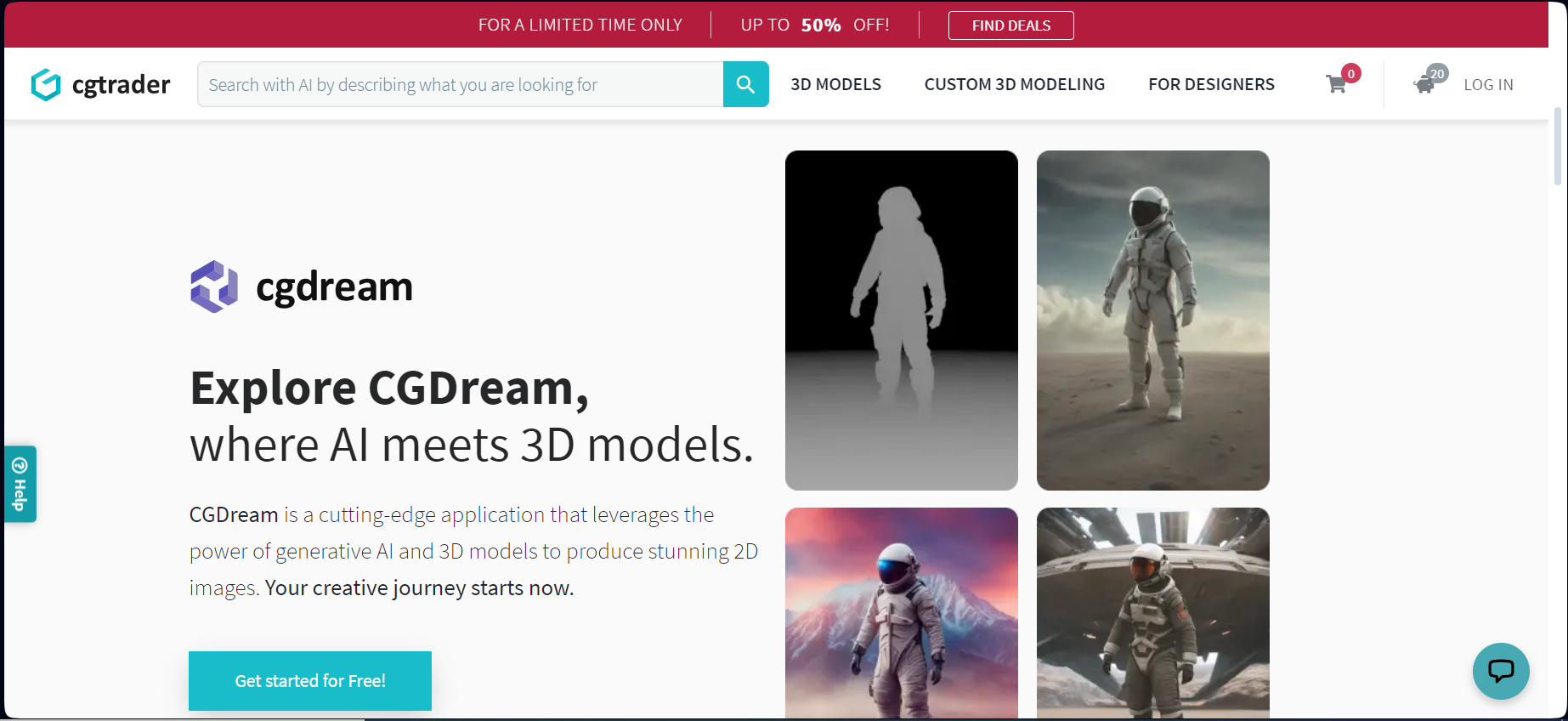
CGTrader is gaining popularity as an alternative to Thingiverse. It’s an online space where creators and designers can upload both free and paid models. Established in 2011, CGTrader has grown to feature over 2 million models, though only a few are free. It includes various model categories such as architecture, transport, animals, household items, plants, and industry.
A unique aspect of CGTrader is the ability to negotiate prices directly with designers, which is handy if you find a model you like but think the price is too high. CGTrader designers can make money from their models, earning up to 80% of the sales revenue, encouraging them to provide high-quality, printable designs.
Although CGTrader primarily aims at professionals using VR/AR and CG technologies, it also has STL files and other formats available for general 3D printing needs. If you need a custom design for a project, CGTrader can connect you with professional designers to create personalized models.
You can only sometimes interact directly with designers for custom projects on Thingiverse, though you can still contact designers there through comments or community forums.
↪ Pros
- Offers stock and custom 3D models for licensing.
- Models can be sold royalty-free or exclusively.
- Wide range of model categories.
- Price negotiation is possible with designers.
↪ Cons
- Mostly caters to professional users.
- A limited number of free models are available.
How to find STL files with search engines?
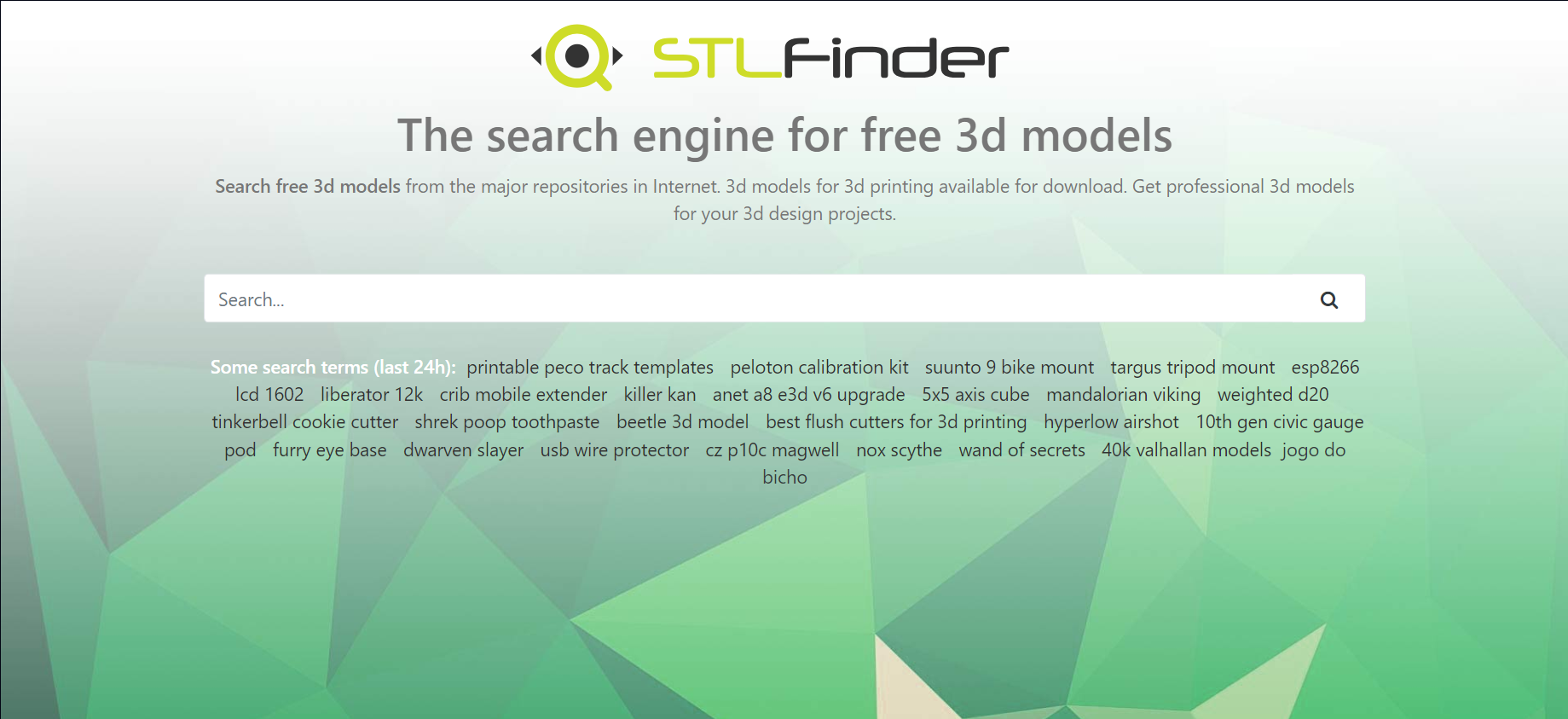
You open several 3D printing websites hoping to find a specific design or an STL file and spend hours searching without success. Often, you find many files, but none that match what you need.
Luckily, several STL search engines are specifically designed to help you find these files quickly, without the need to join any communities or wait for sites like Thingiverse to load. Next time you’re on the hunt for a CAD model, consider using one of these search engines:
READ MORE: How to Print from Canva Yourself or With A Service [2024] ➜
Should you switch?
Switching from Thingiverse to another 3D model platform could be a smart move. Sites like My Mini Factory, Cults, and CGTrader are excellent options because they verify each model for quality, ensuring you get designs ready to print, saving you time and effort.
These platforms allow for direct price negotiations with designers and feature advanced search tools, making finding precisely what you need easier.
If you are someone who prefers quality over quantity and always looks for sources that are secure to use, you should consider other options. Also, if you are someone who wants to explore communities and interact with other designers, you should consider trying these alternatives to enhance your 3D printing experience.
FAQs
3D model files can be found in several formats, including OBJ, FBX, 3DS, and more, depending on what the platform supports and the project’s specific needs.
Common mistakes include not adhering to the platform’s file format guidelines, ignoring quality control checks, which can lead to unprintable designs, and failing to provide a detailed description or images of the model.
Copyright laws may vary by country, but most platforms operate under international standards to protect creators’ intellectual property rights, typically requiring users to agree not to misuse copyrighted materials.
You should always use the right type of filament, ensure your printer settings are correctly configured for the specific model, and use a test print to identify any potential issues early.
To protect your personal information, use strong, unique passwords for your accounts, enable two-factor authentication if available, and be cautious about the amount of personal information you share.
 Reviewed by
Reviewed by 